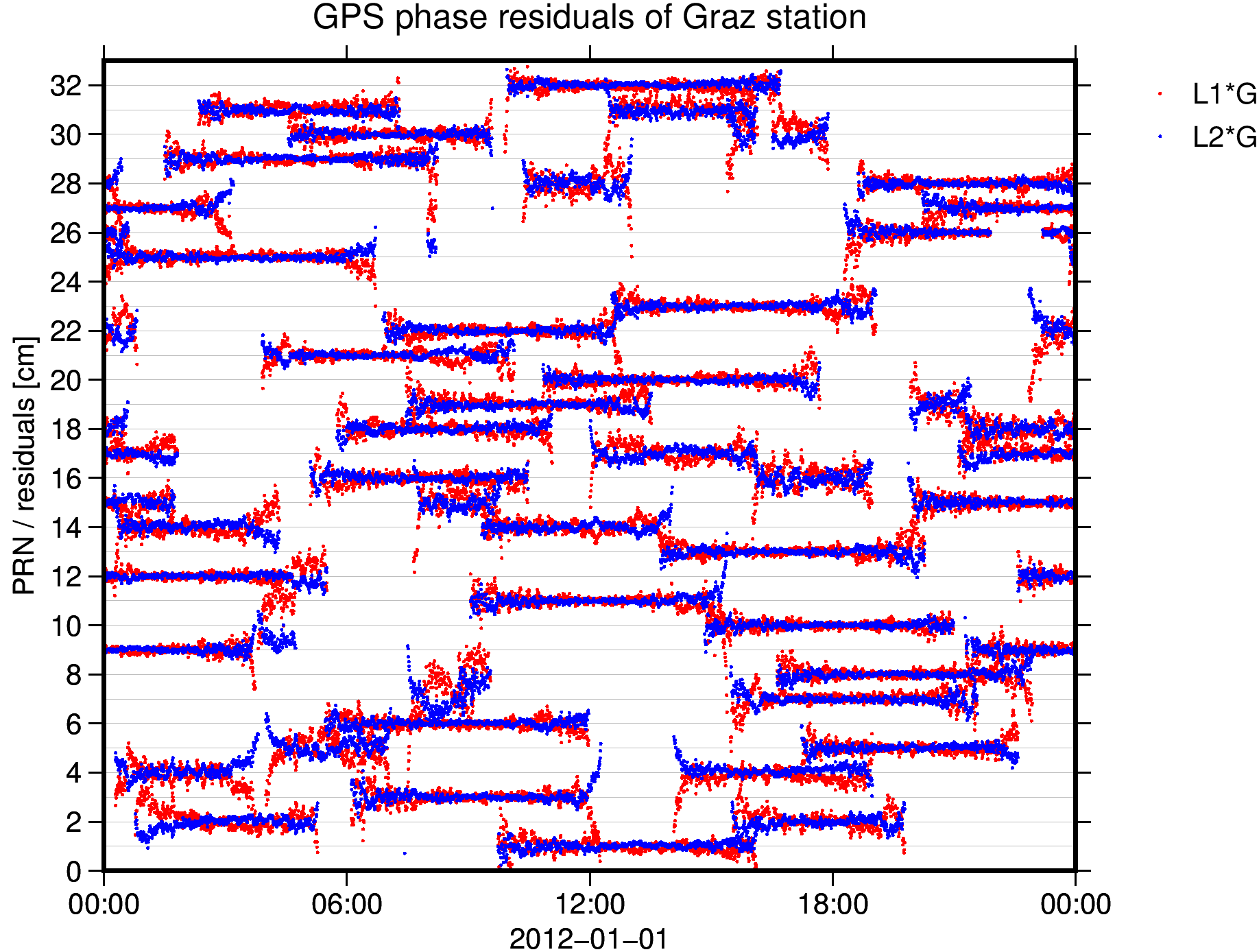InstrumentGnssReceiver2TimeSeries
Convert selected GNSS observations or residuals into a simpler time series format. The outputfileTimeSeries is an instrument file (MISCVALUES). For each epoch the first data column contains the PRN, the second the satellite system, followed by a column for each GNSS type. As normally more than one GNSS transmitter is tracked per epoch, the output file has several lines per observed epoch (epochs with the same time, one for each transmitter).
The second data column of the output contains a number representating the system
- 71: 'G', GPS
- 82: 'R', GLONASS
- 69: 'E', GALILEO
- 67: 'C', BDS
- 83: 'S', SBAS
- 74: 'J', QZSS
- 73: 'I', IRNSS .
A GNSS residual file includes additional information besides the residuals, which can also be selected with type
A1*,E1*: azimuth and elevation at receiver-
A2*,E2*: azimuth and elevation at transmitter -
I**: Estimated slant total electron content (STEC)
Furthermore these files may include for each residual type information about the redundancy and the accuracy relation $\sigma/\sigma_0$ of the estimated $\sigma$ versus the apriori $\sigma_0$ from the least squares adjustment. The three values (residuals, redundancy, $\sigma/\sigma_0$) are coded with the same type. To get access to all values the corresponding type must be repeated in type.
Example: Selected GPS phase residuals (type='L1*G' and type='L2*G').
Plotted with PlotGraph with two layer:linesAndPoints
(valueX='data0', valueY='100*data3+data1' and valueY='100*data4+data1' respectively).

| Name | Type | Annotation |
|---|---|---|
outputfileTimeSeries | filename | Instrument (MISCVALUES): prn, system, values for each type |
inputfileGnssReceiver | filename | GNSS receiver observations or residuals |
type | gnssType |